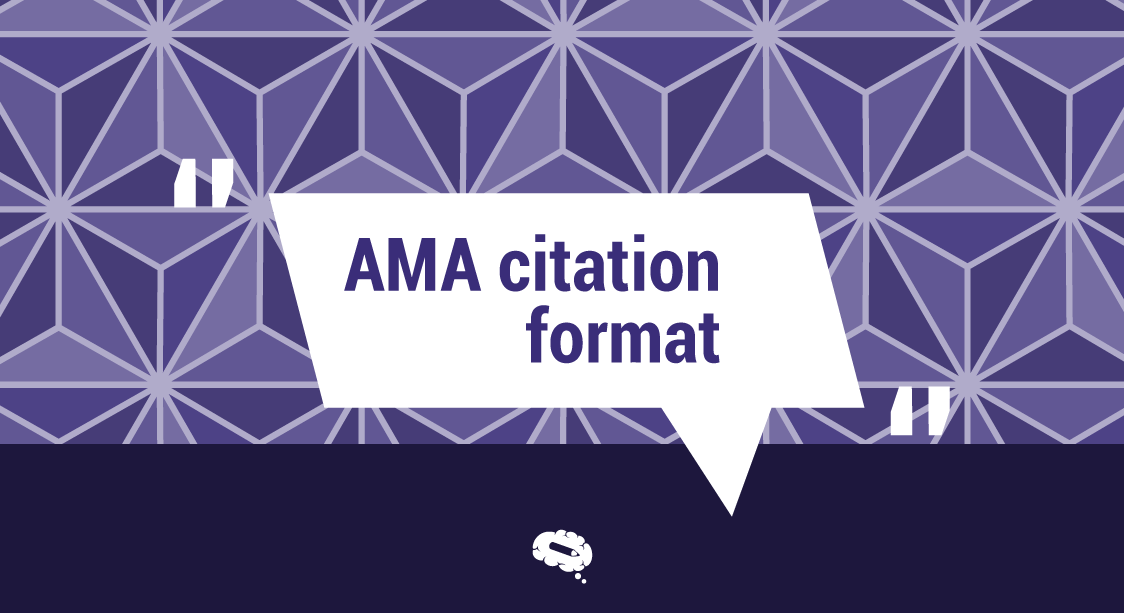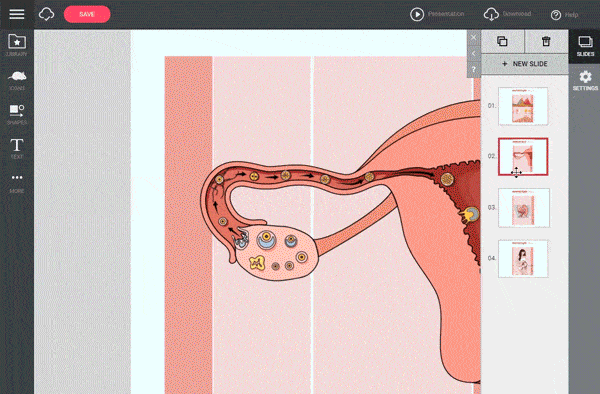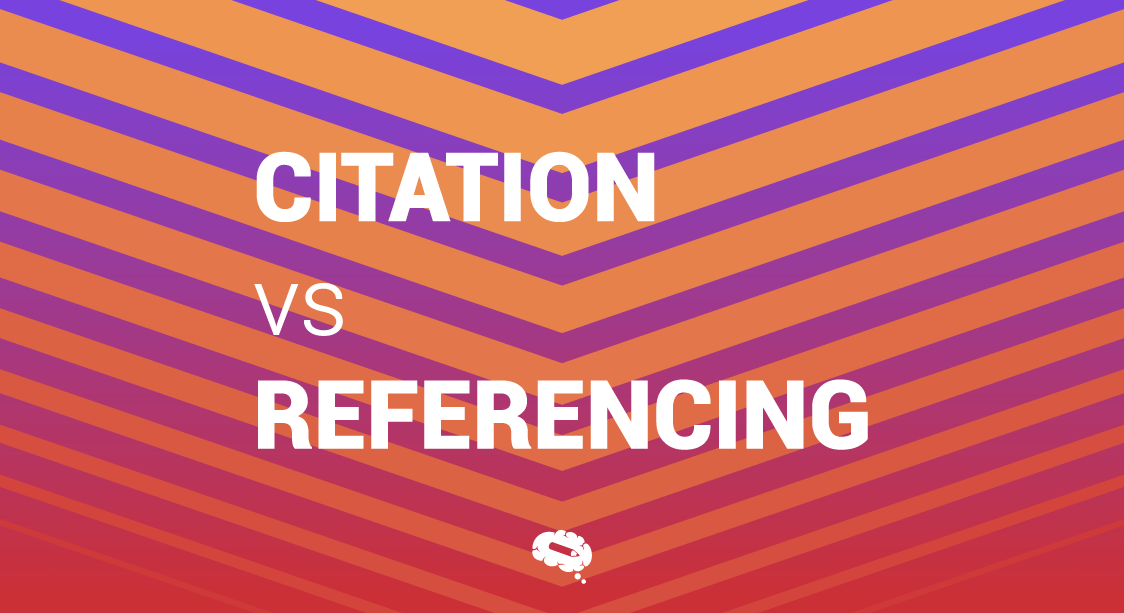Citing sources is an important part of producing a well-researched and reputable piece in academic writing. Citing sources correctly not only pays acknowledgment to the original writers but also assists readers in locating and evaluating the sources utilized. With so many citation styles available, writers may find it difficult to select the best one for their work.
The American Medical Association, for example, created the AMA citation format, which is extensively used in medicine and other health-related areas.
In this article, we will go through the fundamentals of the AMA citation format and present the best practices for referencing using the AMA format.
What is the AMA format?
The AMA format, as previously stated, is a citation style created by the American Medical Association (AMA) in 1962.
The AMA Manual of Style has been revised and updated multiple times throughout the years to reflect changes in the area and technological improvements. The latest edition, the 11th edition, was released in 2020 and contains guidelines for citing internet and social media sources, as well as improved grammar, punctuation, and usage recommendations.
The AMA is mostly used to cite sources in research papers, journals, and other academic papers in the medical and health sciences areas. It prioritizes clarity and precision in writing, with an emphasis on giving explicit information about the sources utilized.
Citations must be numbered and listed in the order they are included in the document, and each citation contains complete details about the writer, title, publisher, and publication date. The AMA format also contains formatting rules for tables, figures, and references.
The correct usage of the AMA format is critical for ensuring that your academic document is accurate, trustworthy, and adheres to the conventions of the medical and health sciences areas.
AMA formatting basics
Before we delve into the more specifics requirements for AMA Citation Format, is important to know that there are also general requirements, such as:
- Employ 1-inch margins and indent the initial lines of paragraphs by ½ inch;
- Page numbers should be placed in the upper right corner of each page (starting with the title page);
- You must choose a standard font, such as Times New Roman, at size 12.
- Must double-space the content;
- If you use acronyms, make sure to spell them out the first time you use them;
- Be consistent in your use of AMA formatting throughout your document.
In-text Citation
To identify a reference in the text, the AMA citation style employs a superscript numeral and this number refers to a numbered reference in the document’s reference list.
“According to Smith et al.¹, the prevalence of poverty in the United States has grown in recent years,” for example. The superscript number “¹” in this example suggests that the information in the sentence comes from reference number 1 in the reference list.
If you utilize information taken from a single source in your paper more than once, use the same superscript number every time.
You may need to use many sources in a single statement in some cases. In this scenario, many superscript numerals should be used in the relevant places. “Many studies have demonstrated that poverty enhances criminality. 2,3,4” for example.
Also, if you are quoting a specific page or set of pages, insert the page number(s) after the superscript number, as in “According to Jones5(p26), the new therapy has a better success rate than the conventional way,” for example.
AMA References
In AMA citation style, references are a list of sources cited in your research paper or academic document. The reference list should be organized numerically according to the order in which the in-text citations appear in the text.
The following elements should be included in each reference in the list:
- Author(s): The names of the authors of the source material, listed in the order they appear in the source.
- Article or chapter title: The title of the article or chapter, in sentence case (only the first word and proper nouns capitalized).
- Journal or book title: The title of the journal or book, in italics.
- Publication information: The publication information of the source material, including the volume and issue numbers (for journal articles) or the publisher and location (for books).
- Date of publication: The date of publication of the source material.
- Page numbers: The page numbers of the source material (for journal articles) or the range of pages used (for book chapters).
Book
- Book with one author:
| Format: Author AA. Title of Work. Location: Publisher; Year: Page-Page. |
| Example: Smith J. Introduction to Psychology. New York, NY: McGraw Hill; 2018:125-130. |
- Book with two to six authors:
| Format: Author AA, Author BB. Title of Work. Location: Publisher; Year: Page-Page. |
| Example: Johnson JE, Simpson RL. Psychiatric Mental Health Nursing. 8th ed. Philadelphia, PA: Wolters Kluwer Health; 2019:210-220. |
- Book with seven or more authors:
| Format: Author AA, Author BB, Author CC, et al. Title of Work. Location: Publisher; Year: Page- Page. |
| Example: Smith A, Johnson B, Williams C, et al. Mental Health and Well-Being in the Workplace. New York, NY: Springer; 2021:30-50. |
Journals
- Journals with one to six authors:
| Format: Author AA, Author BB, Author CC. Title of article. Abbreviated Journal Title. Year; Volume(Issue): Page-Page. |
| Example: Garcia M. The impact of social media on mental health. JAMA Psychiatry. 2019;76(4):432-439. |
- Journals with seven or more authors:
| Format: Author AA, Author BB, Author CC, et al. Title of article. Abbreviated Journal Title. Year; Volume (Issue): Page-Page. |
| Example: Davis L, Williams R, Kendrick, K. The effects of exercise on depression. JAMA Psychiatry. 2020;77(2):210-217. |
- Electronic journal article:
| Format: Author AA. Title of article. Abbreviated Journal Title. Year; Volume(Issue): Page-Page. URL. Published or Last updated date. Accessed date. |
| Example: Davidson Baer E. Key ideas in nursing’s first century. Am J Nursing. 2012;112(5):48- 55. http://journals.lww.com/ajnonline/Abstract/2012/05000/Key_Ideas_in_ Nursing_s_First_Century.27.aspx Published May 2012. Accessed September 23, 2012. |
- Electronic journal article with DOI:
| Format: Author AA, Author BB. Title of article. Abbreviated Journal Title. Year; Volume(Issue): Page-Page. doi:xx.xxxx/xxxxxxxxxxxxxx. |
| Example: Smith JA, Johnson KL, Brown MJ. The effects of exercise on blood pressure in overweight adults. J Phys Act Health. 2022;19(2):152-159. doi: 10.1123/jpah.2019-0434. |
Newspaper and Magazines
- Newspaper or Magazine article:
| Format: Author AA. Title of article. Title of Magazine or Newspaper. Month Day, Year:Page- Page. |
| Example: Johnson M. How to Stay Healthy During Cold and Flu Season. Health. 2022; January:36-41. |
- Electronic Newspaper or Magazine article:
| Format: Author AA. Title of Article. Title of Magazine or Newspaper. Month Day, Year: Page- Page. URL. Published date or Last updated date. Accessed date. |
| Example: Galloway G. Liberals go on the attack after Harper says they stand for nothing. The Globe and Mail. September 19, 2012. http://www.theglobeandmail.com/news/politics/ liberals-go-on-the-attack-after-harper-says-they-stand-for-nothing/article4554914/. Updated September 19, 2012. Accessed September 19, 2012. |
Websites
- Website Author:
- Website Organization:
| Format: Webpage title. Name of Website or Organization. URL. Published or Updated date. Accessed date. |
| Example: American Heart Association. Physical Activity Improves Quality of Life. American Heart Association. https://www.heart.org/en/healthy-living/fitness/fitness-basics/physical-activity-improves-quality-of-life. Published February 2022. Accessed March 2, 2023. |
- Website No Author/No Organization:
Your creations, ready within minutes!
Creating an infographic from scratch can be time-consuming, especially if you are not experienced with design software. An automatic tool like Mind The Graph can help you create a professional-looking infographic quickly and easily within minutes. Start using Mind The Graph now!

Subscribe to our newsletter
Exclusive high quality content about effective visual
communication in science.






